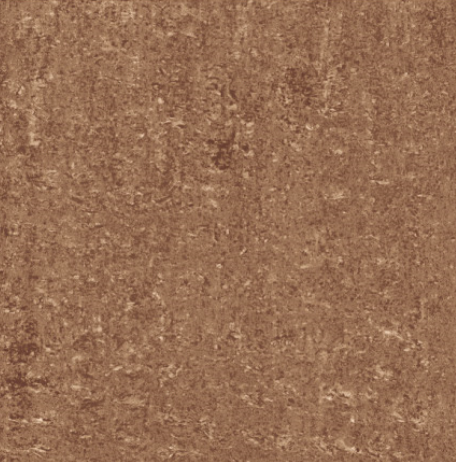
Maybe ceramic tile is the only flooring material that truly works in any room of the house. It's widely used in kitchens and bathrooms as well as foyers, mudrooms, and other high-traffic areas. But many homes, especially in warm climates, use tile to great effect in living areas and bedrooms, too. In other words, you really can't go wrong with tile. If there are any drawbacks to this durable, elegant flooring, it is that it can be hard and cold, and is somewhat tricky for DIYers to install.
Ceramic tiles have a hard, solid surface, that does not attract or hold onto dirt, dust, pollen, or other allergens. When these small particles do land on a ceramic floor, they stand out against the surface, making it easy to wipe them away with a mop or sponge. This helps to keep the air free of irritating materials that can be harmful to asthma and allergy sufferers.
Ceramic tile can be one of the more affordable flooring materials, starting at well below $5 per square foot for budget tile and DIY installation. However, as you move into better-looking tile and professional installation, tile flooring can easily cost as much or more than quality hardwood flooring. National industry statistics show that ceramic tile flooring installed professionally can range from a low of about $15 per square foot to a high of more than $60 per square foot. It all depends on the quality of the tile and the difficulty of the installation.

Ceramic flooring is fairly easy to care for—especially glazed tiles, which have a hard protective top layer that makes them impervious to water and most stains. This is the main reason why tile is preferred for wet areas like bathrooms, kitchens, and laundry rooms. Dirt, stains, and liquids rest on the surface, allowing you to easily wipe or mop them away.
Routine maintenance consists of little more than sweeping or vacuuming with a soft brush attachment to keep the floor free of dirt and loose debris. If set-in stains do occur, you can use almost any heavy-duty cleaner without having to worry about damaging the material.
While most ceramic floor tile is glazed, there are unglazed ceramic tiles, such as traditional tile. These must be sealed to protect their surface from liquids and stains. And with all types of tile, the grout in between the tiles is susceptible to moisture and stains and should be sealed regularly for protection.
Ceramic flooring is extremely tough and difficult to crack. A quality installation can last for hundreds of years if the floor is well-maintained. If a single tile does crack due to a severe impact, the process for replacing a tile is relatively simple.
Modern manufacturing techniques allow ceramic producers to make materials that can be printed or embossed in numerous ways. Solid tiles can be mixed-and-matched in patterns or accented with custom designs or motifs. They can also be printed to reproduce the look of many hardwoods and natural stones. Finally, the tiles themselves can be cut and shaped into triangles, rectangles, and planks.
Ceramic tile flooring is quite appropriate for any home style, though it is a nearly standard feature in any Mediterranean or Southwest-style home.
Ceramic tile is labor-intensive and somewhat tricky to install. Amateurs can certainly do it, but tile is not as DIY-friendly as laminate or vinyl. Proper installation of floor tile starts with a layer of cement board over wood subfloors (concrete floors don't need tile backer), adding cost, time, and labor to the project. The tiles are then glued down to the backer board using a cementitious thin-set adhesive, and the installation concludes with filling the joints between tiles with grout.
Homeowners who want to install their own tile should be careful to choose products that are relatively easy to install, avoiding tricky tiles, such as large "rectified" tile, polished stone tile, or natural clay or Saltillo tile—all of which are best left to professionals.
Some ceramic floor tile can be quite heavy, and all tile needs a stiff, strong floor framing to prevent cracking. This means that tile may not always be appropriate for upper-story installations or floors with inadequate floor structures.
Ceramic is extremely hard, which makes it easy to clean and maintain. Unfortunately, this can also make it difficult and uncomfortable to stand on. Unlike resilient floors, hard ceramics cannot be softened using padded underlayment. This means that these materials may not be suited to environments where people will be forced to stand for long periods. The hardness can also be a liability in kitchens, where a dropped dish will very likely break against the hard surface. Finally, the hardness of ceramic tile may be a problem in rooms used by anyone prone to falls, such as small children or elderly residents.
The hardness of ceramic can, of course, be offset by using throw rugs or area rugs in strategic places where people tend to stand for long periods, such as in kitchen work areas.
While some tile holds heat fairly well, all tile gets cold in cold weather, which can be a shock to your toes first thing in the morning or an unwelcome reality on bare feet in the bathroom. The only way to counteract cold tile is with in-floor heat, either electric mats under the tile or radiant heating in or under the subfloor.
Copyright © 2021 Guangzhou Weyes Network Technology Co., Ltd. | All Rights Reserved